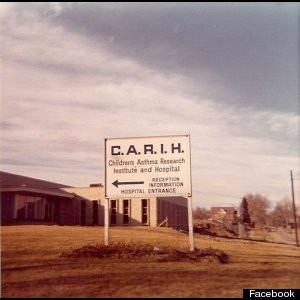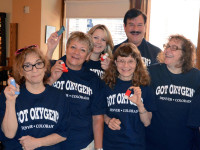---
We were part of groundbreaking asthma research in the '70s. Decades later, Facebook brought us back together.
When I was a child in the early 1970s, I suffered many bad bouts of asthma-related illness. A case of bronchitis became so severe I needed a tracheotomy to keep from dying. After I recovered from the operation, my doctors felt they couldn't treat me any longer and recommended that my parents send me to Children's Asthma Research Institute and Hospital--the most successful research institute in the discovery and implementation of asthma treatment.

So, at the age of 9, I moved away from my family in North Carolina to my new home in Denver, Colo.
Children's Asthma Research Institute and Hospital was only for kids, and all of the kids there were like me: asthma had nearly killed them. When I arrived, there were about 100 patients ages ranging from 5 to 16. The first person I met was Linda Malloy Buonanno. She was my age, but she had already been at CARIH for about a year, so she was assigned to show me around while my parents filled out paperwork.
I can still picture everything that first day: Linda was in the reception area of the research hospital when we got there. She was wearing a red dress, and was quiet and confident. She showed me the campus, filled me in on the rules and routines, and introduced me to everyone. I really didn't know what to think about this place so I took my cues from her. She told me about school, the routines, the counselors, the other kids. Then, as it turned out, we were assigned to the same room, which made me feel a lot more comfortable.
CARIH had strict rules around family contact in order to preserve the integrity of their research. We could only talk to our parents on the phone once a week, and they could only visit us twice per year. This was meant to keep everything clinical and controlled, so whether you came from North Carolina, Colorado, Peru, or England, you had the same amount of contact with your family.
Because of this, friends at CARIH became more than just a social circle -- they were family. Everyone had a lot of friends, and there was a lot of support for the illness and treatments we underwent. We also had "house parents" who helped us with everything from homework and hygiene to coping with missing our families to taking our medications and managing our asthma.

I stayed at CARIH for almost two years. When I was released and sent home, my friends and I exchanged addresses and promised to write, and we did for a while. But people grew up, moved, married and changed their names, and could be impossible to find. Over the years, I wondered what happened to my old friends.
I wondered what happened to CARIH, too. I found out that the institute had merged with National Jewish Health, a large research hospital in Denver. National Jewish Health sold off the CARIH campus and integrated the institute's research into its own operation. I called National Jewish Health to see if they could help me find my friends, but patient confidentiality records prevented this.
After researching, cold calling, and letter writing, I found some friends, but it wasn't until I searched on Facebook that I eventually found Linda. After being out of touch for almost 40 years, the appreciation I felt for finding her can only be matched by my gratitude for having her as my guide at CARIH in the first place.
I realized that other CARIH patients could benefit from this catharsis that came from rekindling a friendship from this unique and profound time in our lives. So in 2009, I started an open Facebook Group for CARIH alumni. I quickly discovered that many former residents shared my curiosity. I started getting notifications in my inbox that people were joining, commenting and posting photos.
Within a couple of years, we had nearly 100 members whose experience at CARIH spanned the 1960s, '70s and '80s. We shared memories and filled in the blanks on forgotten information, such as the names and whereabouts of our house parents, doctors, and nurses. We shared updates on our health and were amazed by the innovations that CARIH was responsible for in the treatment of asthma. Nearly all modern treatments are related to the research and discoveries that came from the institute.

By 2012, many members were asking for a reunion, so we planned one for August in Denver. We went back to the neighborhood where CARIH had stood and peeked in the windows of our old schools, walked around Sloan's Lake, which we remembered from our childhood, and reconnected with memories and stories. We reached out to National Jewish Health about the reunion and they very graciously took us on a tour of the campus. They showed us how the innovations and research we were a part of have led to a number of other medical discoveries.
The reunion was important for many of us. It answered questions that have been with us for most of our lives, and it was an opportunity to reconcile emotions, to express gratitude and to reconnect with others who shared this extraordinary experience. We certainly will have more reunions and, hopefully, will undertake a project to formally chronicle our history.
Our Facebook Group allows us to record our memories and define our role in helping to solve the mysteries of one of the most common and dangerous diseases. We are all grateful for this platform to remember, share, connect, and reflect, and we look forward to continuing to grow.
Scotty Reiss, co-founder of SheBuysCars, is a writer, consultant, strategist, event developer, jewelry designer and mom in Greenwich, Conn.
No comments:
Post a Comment